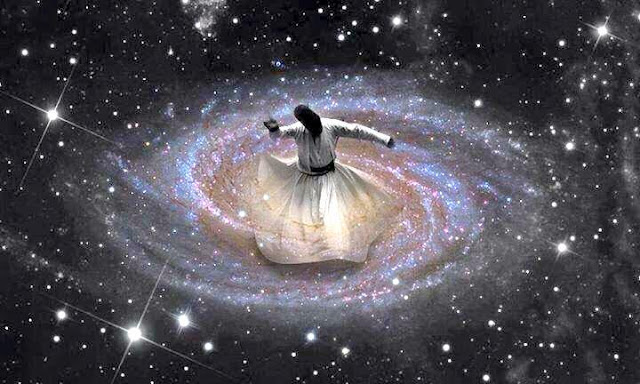Sufism is a mystical school of practice that emphasizes the inward search for God and shuns materialism. It has produced some of the world’s most beloved literature, like the love poems of the 13th century Iranian jurist Rumi.
But Sufism, often known as Islamic mysticism, has come under violent attack in recent years. While it is sometimes misunderstood as a sect of Islam, it is actually a broader style of worship that transcends sects, directing followers’ attention inward. Sufi practice focuses on the renunciation of worldly things, purification of the soul and the mystical contemplation of God’s nature. Followers try to get closer to God by seeking spiritual learning known as tariqa. Confusion about Sufism is common, even among Muslims, according to Imam Feisal Abdul Rauf, an American Sufi cleric.
Extracts from the book Occult Secrets of Vril, by Robert Sepehr
Chapter 6 - The Mystics:
The esoteric interpretation of the Quran, also called ta 'wil, is the allegorical interpretation or the quest for its hidden, or occult, inner meanings. Initially used as a synonym of conventional interpretation, it came to mean a process of discerning its most fundamental understandings.
The esoteric interpretations do not usually contradict the conventional (exoteric) interpretations; instead, they discuss the deepest, often secret, hidden and withheld inner levels of spiritual attainment. Sufis practice ancient alchemical techniques, developed long before Islam, which were incorporated into the Islamic faith as mysteries to allow initiated individuals to develop spiritual realization, and then in turn to teach then to others.
Sufis often use music as a means to pray and connect with God, which members archive by entering into a group meditative altered state. Although some traditional Islamic leadership frown upon this musical expression, Sufi musical performances, including chanting, dancing, and meditation, aim to lead followers to the subjective experience of annihilation of the ego and the merging with the higher divine self to commune with God directly.
This tradition teaches that the ideal state of self realization is through subsistence, where the mystic is conscious of both universal unity and, to a lesser degree, of his own individual identity. The goal is to experience a connection to divinity within oneself. What is most essential to Sufism can not be learned intellectually; one can only reach it through personal experience and inward transformation.
The Sufi philosopher Ibn Arabi, once said, "When my beloved appears, with what eye do I see him? With his eye, not with mine. For nose sees him but himself." It is said that through the heart divinity is most accessible and, according to the mystics, altered states of higher consciousness, psychologically described as an altered trance state, are ritualistically entered into in an effort to embrace and experience this spiritual union.
Eventually the Sufis gathered and aggregated alchemical and Gnostic teachings from various ancient sources and, combining them, established numerous new synthetic mystery school traditions - an amalgamation of alchemical wisdom derived from India, Egypt, Persia and Greece. One such mystery tradition, called the House of Wisdom, was founded in Cairo. Many seeking ancient knowledge came from around the Middle East and Asia to study at this mystery school, which was divided into nine degrees leading to elighqment. Adepts who graduated from the House of Wisdom went on to found their own mystery school. Hassani Sabbah, nicknamed the 'Old Man', or 'Lord of the Mountain' formed one such school, called the School of the Hashishi ("Assassins"). This will be the topic of a next article.
Tanoura means skirt, and the Tanoura dance, is a kind of Sufi folkloric dance very common in Islamic countries, especially in Turkey and in Egypt. Known to the West as Twirling Dervishes, the Mevlevi Order was found in the 13th century. The term “Dervish” literally means “doorway”. The whirling is magnificent to watch, as the performers enter a hyper-conscious state, their eyes closed, yet always maintaining perfect physical balance. Similar techniques are used in some religious rituals in Columbia.


No comments:
Post a Comment